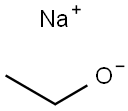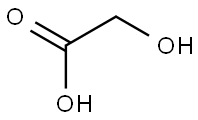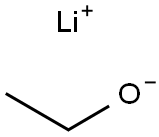Potassium ethylate
- CAS NO.:917-58-8
- Empirical Formula: C2H5KO
- Molecular Weight: 84.16
- MDL number: MFCD00054277
- EINECS: 213-029-0
- SAFETY DATA SHEET (SDS)
- Update Date: 2025-01-27 09:38:02

What is Potassium ethylate?
Chemical properties
solid
The Uses of Potassium ethylate
Potassium Ethoxide is a solvent for the laboratory and industry in the manufacture of alcohol, pharmaceuticals, perfumery, and in other organic synthesis processes.
Flammability and Explosibility
Highly flammable
Properties of Potassium ethylate
| Melting point: | 250°C (dec.) |
| Boiling point: | -78.5°C (rough estimate) |
| Density | 0.894 g/mL at 25 °C |
| vapor pressure | 0Pa at 25℃ |
| refractive index | n |
| Flash point: | 70 °F |
| storage temp. | Flammables area |
| solubility | Soluble in ethanol, ether |
| form | Powder |
| Specific Gravity | 0.894 |
| color | white to off-white |
| Water Solubility | It reacts vigorously with water. |
| Sensitive | Moisture Sensitive |
| Hydrolytic Sensitivity | 7: reacts slowly with moisture/water |
| Exposure limits | ACGIH: STEL 1000 ppm OSHA: TWA 1000 ppm(1900 mg/m3) NIOSH: IDLH 3300 ppm; TWA 1000 ppm(1900 mg/m3) |
| Stability: | Stable, but highly flammable. Reacts violently with water. Contact with damp air may lead to heating of the solid, which could in turn ignite it, or materials with which it is in contact. Incompatible with air, water, moisture, acids, acid chlorides, acid anhydrides, oxidizing agents, reducing agents. |
| CAS DataBase Reference | 917-58-8(CAS DataBase Reference) |
| EPA Substance Registry System | Potassium ethoxide (917-58-8) |
Safety information for Potassium ethylate
| Signal word | Danger |
| Pictogram(s) |
 Flame Flammables GHS02  Corrosion Corrosives GHS05 |
| GHS Hazard Statements |
H251:Self-heating substances and mixtures H314:Skin corrosion/irritation |
| Precautionary Statement Codes |
P235:Keep cool. P260:Do not breathe dust/fume/gas/mist/vapours/spray. P280:Wear protective gloves/protective clothing/eye protection/face protection. P303+P361+P353:IF ON SKIN (or hair): Remove/Take off Immediately all contaminated clothing. Rinse SKIN with water/shower. P305+P351+P338:IF IN EYES: Rinse cautiously with water for several minutes. Remove contact lenses, if present and easy to do. Continuerinsing. |
Computed Descriptors for Potassium ethylate
Potassium ethylate manufacturer
TRUUCHEM TECHNOLOGIES PRIVATE LIMITED
1Y
Phone:+91-8619349510
Whatsapp: +91- 8619349510
product: 917-58-8 Potassium Methoxide 0.99
Related products of tetrahydrofuran








You may like
-
 917-58-8 Potassium ethoxide 98%View Details
917-58-8 Potassium ethoxide 98%View Details
917-58-8 -
 917-58-8 Potassium Methoxide 0.99View Details
917-58-8 Potassium Methoxide 0.99View Details
917-58-8 -
 Potassium ethoxide CAS 917-58-8View Details
Potassium ethoxide CAS 917-58-8View Details
917-58-8 -
 Potassium ethoxide CAS 917-58-8View Details
Potassium ethoxide CAS 917-58-8View Details
917-58-8 -
 Potassium ethoxide CAS 917-58-8View Details
Potassium ethoxide CAS 917-58-8View Details
917-58-8 -
 917-58-8View Details
917-58-8View Details
917-58-8 -
 Potassium ethoxide CAS 917-58-8View Details
Potassium ethoxide CAS 917-58-8View Details
917-58-8 -
 Potassium Ethoxide (24% Sol. In Ethanol) 917-58-8View Details
Potassium Ethoxide (24% Sol. In Ethanol) 917-58-8View Details
917-58-8
Statement: All products displayed on this website are only used for non medical purposes such as industrial applications or scientific research, and cannot be used for clinical diagnosis or treatment of humans or animals. They are not medicinal or edible.